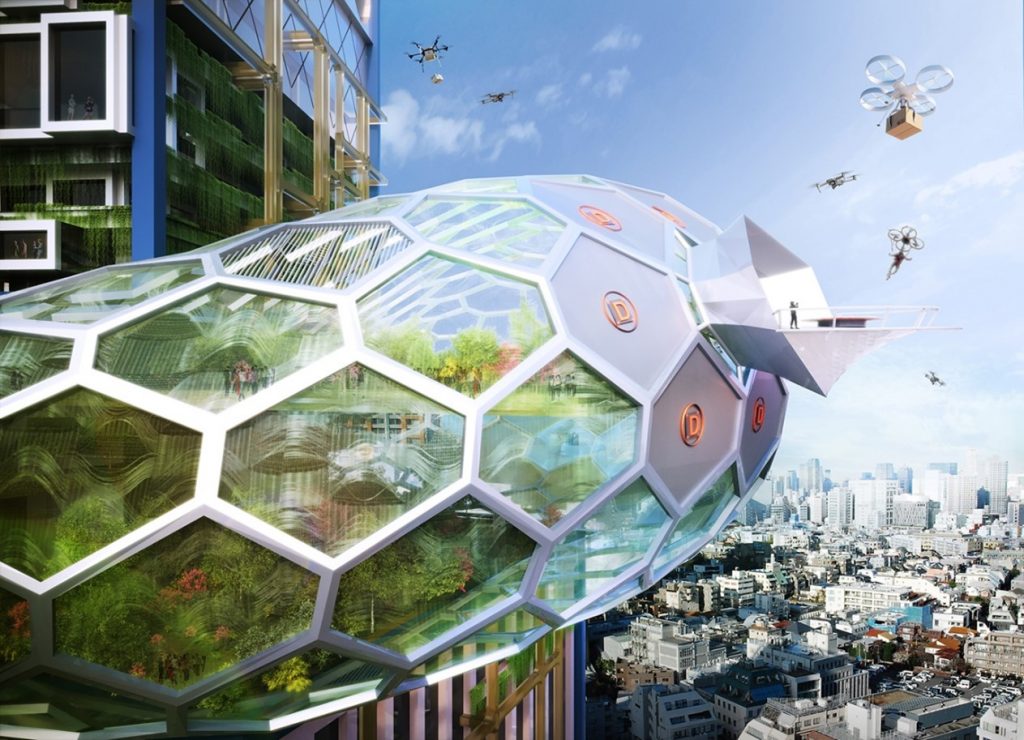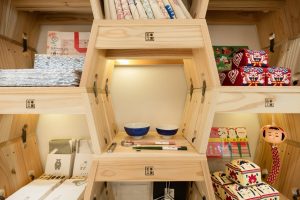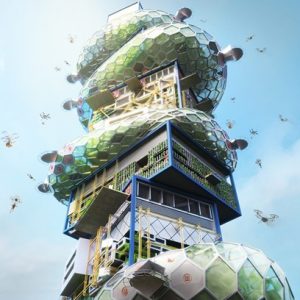
- ARAB NEWS
- 29 Apr 2024

Nader Sammouri
OSAKA: It takes a lot of hard work to refine the details that contribute to making something simple yet refined, as opposed to something that is simple just for the sake of making it affordable.
Keiji Ashizawa realizes this truth because his work frequently takes leaps from the macro to the micro and vice-versa as he designs building exteriors, interiors, and furniture. He is an architect and the CEO of 石巻工房 Ishinomaki Laboratory, a lab that creates simple original designs and custom multifunctional furniture that are uniquely tailored for each space.
“Furniture details are a part of the structure for me, like in architecture. When designing, I try not to distinguish between architecture, interior design and furniture. I believe that all of the elements are connected through the space or landscape through texture and detail,” Ashizawa said.

Detail is what a corner between a floor and a wall looks like, how a mug’s handle is shaped, how a balcony meets a dining room, or how its balustrade joins the parapet.
“Detail is a language which connects spaces. I appreciate traditional Japanese culture and architecture, which has always made me overly aware of details,” Ashizawa said.
Ashizawa believes that attentiveness to detail comes mainly from experiences that elevate one’s awareness of how objects should appear within their own elements and relative to the space they reside in.
But technology, biology and many other endeavours increasingly surround architecture and crave some belonging to it. Are professional endeavours fusing into each other? Or were they always that way with no awareness from people?
Keisuke Toyoda brings this topic into the spotlight with his work that lies at the boundary between architecture, technology, and nature. He simplifies concepts that may seem complex to the ordinary person and brings them to fruition through his CG visualizations. Toyoda is a highly influential Japanese architect, the cofounder of NOIZ, who designed and directed the concept for Osaka Expo 2025 for its bidding race.
“Shibuya hyper cast project is a vertical smart city, a universal concept that visualizes an understanding that takes a brave step towards realizing something more progressive in the near future,” Toyoda said, explaining his visualization of Shibuya hyper cast, which schemes what a future building could appear to be as it fuses with technology while leaning into nature.
Toyoda’s work engages in computational design, architectural informatics, and uses digital technology to imagine smart cities while questioning how data tech can contribute to building design.

“The smartphone device is not just an interface but is also becoming an interspace where the space itself becomes a user interface. The next smartphone could be a car, then perhaps a house with various rooms and functions. The smartphone is currently the window between the physical and the digital, and we may jump into it, or rather, the screen may jump into our physical world,” Toyoda told Arab News Japan.
Toyoda tries to simplify a possible complex output that merges many factors that go beyond architectural design alone by looking at matters from a higher-level thinking perspective. He believes that a smartphone, with all the sophistication that people think it holds, is very primitive compared to a smart environment interspace, which could be the future.
“In the past, information used to be trapped in physical objects and tools, like the clock or the paper calendar. Choices were limited because the technology was limited. However, now, the city is strongly integrated,” Toyoda said.
Toyoda feels that the more he dives into computation, the more he understands how physical reality is like an amazing computer in itself with an enormous amount of information.
“The extent to which we can extract and edit data into digital format is limited. There is a lot which we can’t reproduce or extract from physical reality,” Toyoda explained.
Toyoda thinks that technology can create an extended reality with its innovations. Though, he remarks on the importance of being smart enough to balance innovation with an acceptance of what truly creates value in people’s daily lives. He encourages finding what he likes to call “common ground”.
“Virtual reality, for instance, can enable many activities that we can’t do in real life, but will it give us a feeling of total satisfaction? I believe there are limitations,” Toyoda said.
But then, how should people find a healthy balance between simplicity and complexity?
Toyoda clarifies that it might be the ultimate luxury if one can live a mono-directional path. Nonetheless, the reality of society is multi-focused.
“I love the complexity in a way, and I find it to be the source of richness in nature, which is something I like to explore with,” Toyoda explained.
With that multi-disciplinary awareness, Toyoda no longer flips through architecture journals but reads mathematics and biochemistry magazines, continually sightseeing other endeavours that may seem detached from design, but not really. Armed with general knowledge, he can understand the logic behind natural matters and glue new relationships and topological compositions.
Disciplines, practices and countries merge today, and boundaries are constantly melting.
Ashizawa explains how a blending between the Kuwaiti and Japanese culture, for instance, can be beautiful saying:
“When initiating some research for a shop design in Kuwait, I began exploring the dry oasis near the sea, which is vastly different from Japan’s wet geographical nature. The result was more like a simple Japanese-style design with a garden that is missed in that region. This blending between the Japanese and the Kuwaiti culture was stunning to me.”
Complex Simplicity and Simple Complexity doesn’t just concern design but also signifies the unceasing battle between convergence and divergence, depth and breadth. Which one will win? Or is it a matter of reaching a grey area in-between? And if so, which point on the grey area spectrum is ideal?